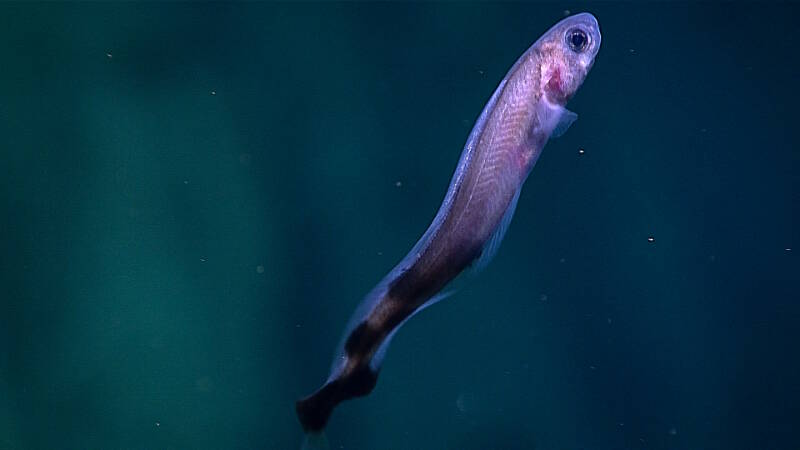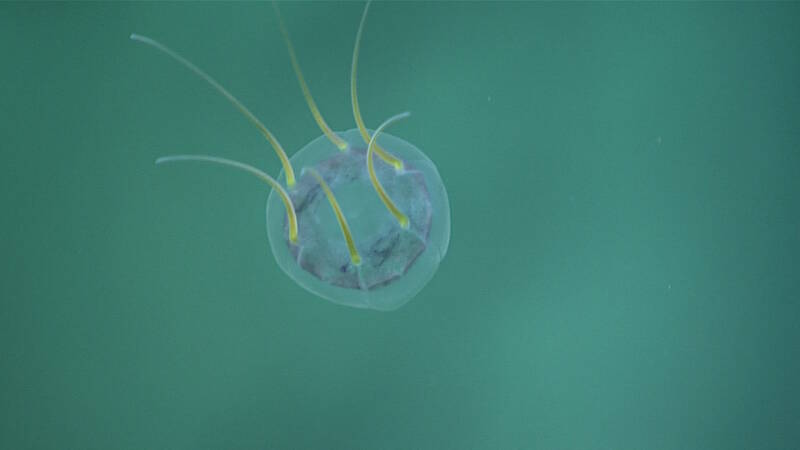The fourth dive within the Pacific Remote Islands Marine National Monument began at 587 meters depth, on the north slope of Howland Island. The dive progressed upslope to about 415 meters and then ended along a contour at 357 meters. The goal of the dive was improving the understanding of commercially important fish, as well as protected species within the region. During descent, there were small fish, crustaceans, medusas, pyrosomes, and siphonophores seen in the water column, as well as high concentrations of particulate organic matter. This dive had a very high diversity of fishes, with approximately 38 taxa recorded, some with ectoparasitic isopods attached. Specific fishes included midwater species (e.g., myctophids) and demersal species: goosefish, seatoads, codlings, oreo fish, scorpionfish, rattails, tonguefish, congers, pearlfish, dragonet, roughy, three species of sharks, greeneyes, deep-sea cardinal fish, green-spotted duck billed fish, snake eels, cusk eels, spikefish, armored sea robin, grappos, amberjack, dory, boar fish, and "ocean bass." The two pearlfish observed are representatives from a recently described genus and represent range extensions; they were previously only reported near Indonesia. Upslope, the rock face resembled features on Baker Island, with heavily eroded karstic terrain interspersed with sedimented channels. Large patches of sediment had small carbonate rocks with coral and shell fragments. Several different corals were observed clinging to vertical and near-vertical rock ledges, including precious corals, white and yellow cup corals, branching and whip bamboos, octocorals, black corals including an unknown black coral with long, extended branches, and a colonial hydroid. Dense colonies of black corals and octocorals were observed on gently sloping sedimented terrain. Coral associates observed included large brittle stars, squat lobsters, shrimps, a solitary hydroid, and amphipods. Along the rock walls, on the sediment surface and within burrows, there were several squat lobsters, shrimps, sea urchins, several sponges (one demosponge was collected), a large hermit crab with anemone house, other crab species, and a shy octopus hiding out in the sediment. Several potentially uninhabited tubes were seen on the sedimented slope. Underneath the eroded carbonate overhangs were limid bivalves. In one of the rock ledges was the proboscis of a spoonworm, possibly suspension feeding. Several sea stars encountered on this dive included cookie stars, coral predators, and a slime star.

